“Our temples are not churches or mosques. They are not places of public worship, for, properly speaking, there is no such thing as public worship in India.”
-Swami Vivekananda.
“India only reveals herself to those who are prepared to be still and over a long period to listen humbly at close quarters to the beating of her heart; only to those who have already entered sufficiently far into themselves, into their own depths, to be able to hear in the inner chamber of the heart (Garba-griham) that secret which India is ceaselessly whispering to them by means of a silence that transcends words. For silence is above all the language through which India reveals herself .. . and imparts her essential message, the message of interiority of that which is Within.” [Swami Abhishiktananda]
Garba-griham (main sanctum) is equated with human head; antarala (vestibule) is equated with human neck; ardha – mandapam (half-hall) is compared with human chest; maha – mandapam (main hall) is equated with the stomach; flag-post is viewed along with human male organ;and gopuram or temple gateway tower is viewed along with human feet.

“Everything is governed by one law. A human being is a microcosmos, i.e. the laws prevailing in the cosmos also operate in the minutest space of the human being.”
The Agama shastras are based in the belief that the divinity can be approached in two ways. It can be viewed as nishkala, formless – absolute; or as sakala having specific aspects.
Nishkala is all-pervasive and is neither explicit nor is it visible. It is analogues, as the Agama texts explain, to the oil in the sesame-seed, fire in the fuel, butter in milk, and scent in flower. It is in human as antaryamin, the inner guide. It has no form and is not apprehended by sense organs, which includes mind.
Sakala, on the other hand, is explicit energy like the fire that has emerged out of the fuel, oil extracted out of the seed, butter that floated to the surface after churning milk or like the fragrance that spreads and delights all. That energy can manifest itself in different forms and humans can approach those forms through appropriate means. The Agamas recognize that means as the archa, the worship methods unique to each form of energy-manifestation or divinity.
The idea of multiple forms of divinity was in the Vedas. Rig Veda at many places talks in terms of saguna, the supreme divinity with attributes. The aspects of the thirty-three divinities were later condensed to three viz. Agni, the aspect of fire, energy and life on earth; Vayu, the aspect of space, movement and air in the mid-region; and Surya the universal energy and life that sustains and governs all existence, in the heavenly region, the space. This provided the basis for the evolution of the classic Indian trinity, the Brahma, Shiva and Vishnu.
The concept of polytheism gave tremendous impetus to all branches of Indian arts, literature and iconography. The polytheism is, in fact, the lifeblood of iconography; for it is only through a divinity with aspects one can represent and worship ones ideal with love, adoration and earnestness. Making an image involves an understanding of its attributes, virtues, powers, characteristics, symbols and its disposition. An image is the visual and concrete form of idealism; the idioms of beauty grace and power nurtured and honed by generations after generations. It is a representation of a community’s collective aspirations.
Since the very purpose of the temple structure is the image residing in it; and the temple is regarded the virtual expansion of the image, let us talk for a while about temple iconography.
The word icon is derived from Greek eikon; and it stands for a sign or that which resembles the god it represents. In the Indian tradition what is worshipped is Bimba, the reflection or Prathima, the image of god, but not the god itself. Bimba means reflection, like the reflection of moon in a tranquil pool. That reflection is not the moon but an image (prathima) of the moon. In other words, what is worshipped in a temple is an idea, a conception or the mental image of god, translated to a form in stone or metal or wood; but, it is not the god itself.
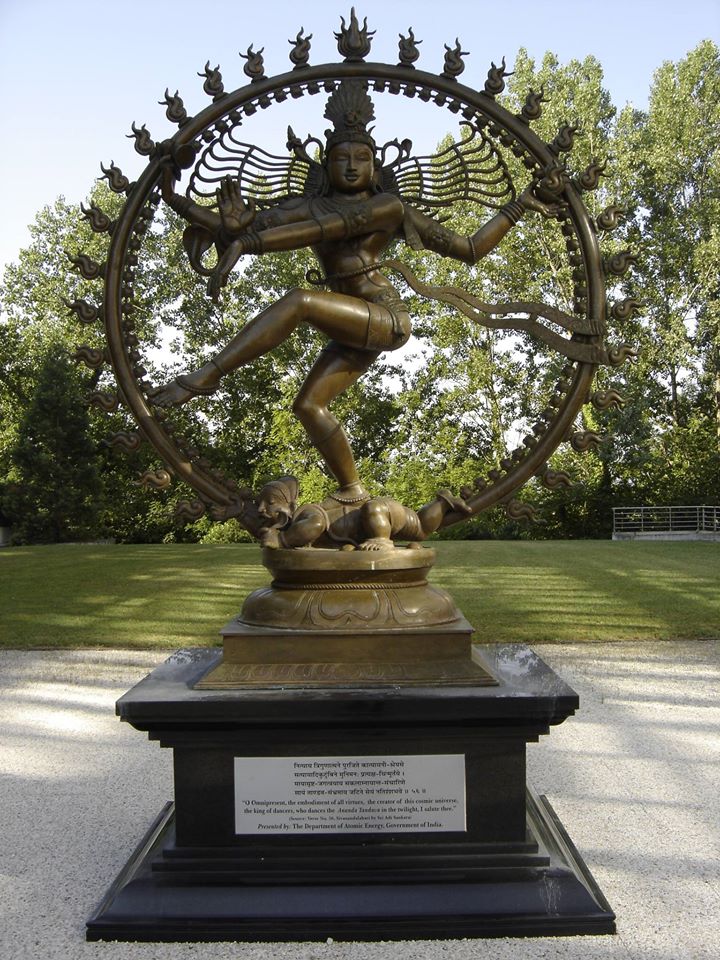
The structural harmony, the rhythm and a fine sense of proportion is the hall mark of Indian temple architecture. It not merely resolves the contradictions but also expresses harmony by encompassing all contradictions, transforming into pure and uncompromised details of structure. The aim of a proportional system, meaning not merely symmetry, is to manifest a sense of coherence and harmony among the elements of the temple and it’s whole.
The proportional harmonization of design, therefore, is of utmost importance in the construction of a temple. It is believed that the power and purity of the structure radiates from its exact proportions and measures as specified in the texts. It is also believed that a meticulously well constructed temple radiates peace and joy; and ensures the welfare of the world and its people.
Without harmony, symmetry and proportion there can be no principles in the design of any temple. This is analogues to the precise relation between the features and organs of a well proportioned, good-looking person.The ancient texts, therefore, insist on a high degree of precision in their measurements.
The standard text mentions “Only if the temple is constructed correctly according to a mathematical system can it be expected to function in harmony with the universe. Only if the measurement of the temple is in every way perfect, there will be perfection in the universe as well.”
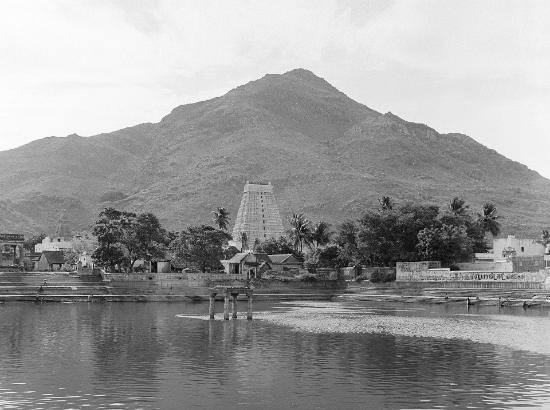
The Hindu temple is a feast of a variety of visual aspects, and wherever one engages one of them, entering a doorway, circumambulating or approaching the inner sanctuary or worshipping there– one is accessing an aspect of the whole.
The rules of Vastu-shastra render beauty, structural stability and quality of spaces by virtue of light, sound and volume management. They also evoke in the devotee an attuning of his person to its structure and ambience.
Hindu Temples take their cue from the structure of Human body. The vast Hindu canonical literature on Agamic texts, Devalaya Vastu (Temple Vastu astrology) and sacred geography describe the temple as a cosmic man, the ‘Purusha’ (cosmic man). Before we proceed further, let us briefly discuss the concept of the Vastu Purusha Mandala.
The faith that Earth is a living organism, throbbing with life and energy; is fundamental to the Vastu Shastra. That living energy is symbolized as a person; he is the Vastu Purusha. The site for the proposed construction is his field; Vastu Purusha Mandala. In fact the Vastu Purusha Mandala, the site plan, is his body; and it is treated as such.
His height extends from the South West corner (pitrah) to the North East corner (Agni).The Vastu Purusha Mandala also depicts the origin of the effects on the human body. All symbolisms flow from these visualizations.
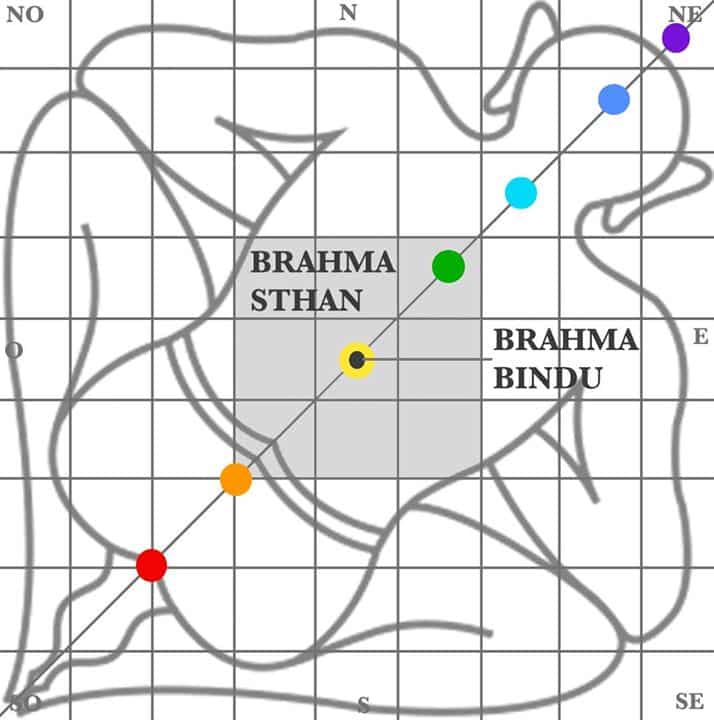
Purusha means ‘person’ literally and refers to Universal Man. Purusha is the body of god incarnated in the ground of existence, divided within the myriad forms. He is also that fragmented body simultaneously sacrificed for the restoration of unity.
Vastu Purusha is associated with the Earth and its movable and immovable basic elements of nature, such as the earth, water, fire, air and space; just as a human being does. The Vastu purusha mandala is in some ways a development of the four pointed or cornered earth mandala having astronomical reference points Further, the Vastu Purusha Mandala is also the cosmos in miniature; and the texts believe “what obtains in a microcosm, obtains in macrocosm too (yatha pinde thatha brahmande).”
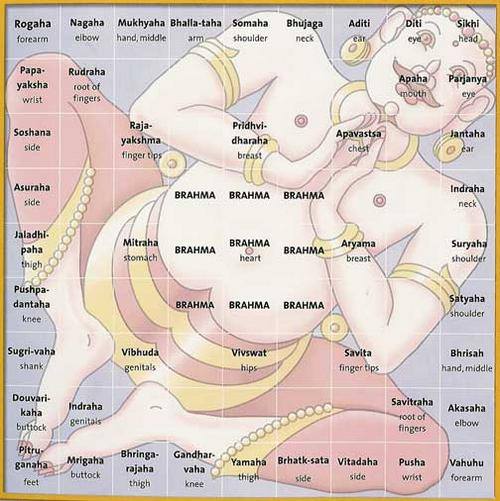
The science of Vastu is believed as part of the Indian architecture. Vastu Shastra developed during the period of 6000 BC and 3000 BC and the ancient Indian text Mayamatam represents Vastu Purusha as the presiding deity for all land structure meant for temples or houses.
Vastu Purusha Mandala is the metaphysical plan of a temple incorporating course of the heavenly bodies and supernatural forces. This Mandala square is divided into (8×8 =64) 64 metaphysical grids / modules or pada for temples. (For dwelling places 9×9=81 metaphysical grids / modules or pada).
“The vastu-purusha-mandala represents the manifest form of the Cosmic Being; upon which the temple is built and in whom the temple rests. The temple is situated in Him, comes from Him, and is a manifestation of Him. The vastu-purusha-mandala is both the body of the Cosmic Being and a bodily device by which those who have the requisite knowledge attain the best results in temple building.” (Stella Kramrisch,; The Hindu Temple,Vol. I)
The Vastu Purusha is visualized as lying with his face and stomach touching the ground; to suggest as if he is carrying the weight of the structure. His head is at North East (ishanya) and his legs are at the South West corner (nairutya).
The South West corner (nairutya) where the Vastu Purusha has his legs corresponds to the Muladhara chakra and denotes the earth principle.
Just as the legs support the weight of the body, the base (adhistana) for the muladhara should be stable and strong. Accordingly, the South West portion of the building is the load bearing area; and should be strong enough to support heavy weights. Just as the feet are warm, the South West cell represents warmth and heat; even according to the atmospheric cycles the South West region receives comparatively more heat.
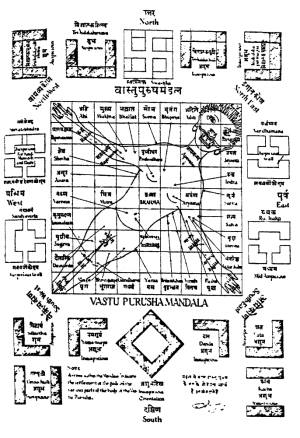
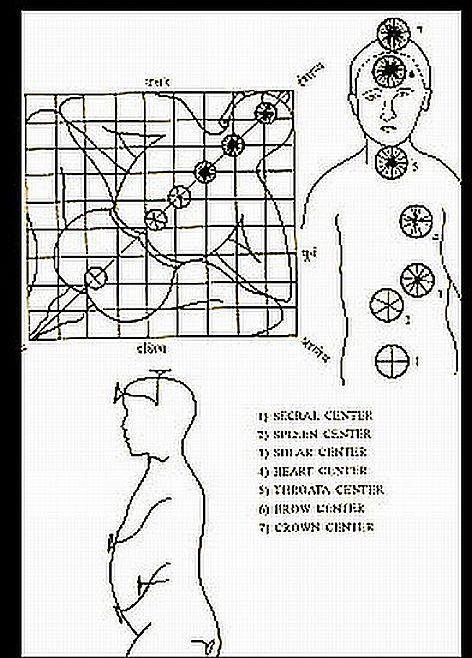
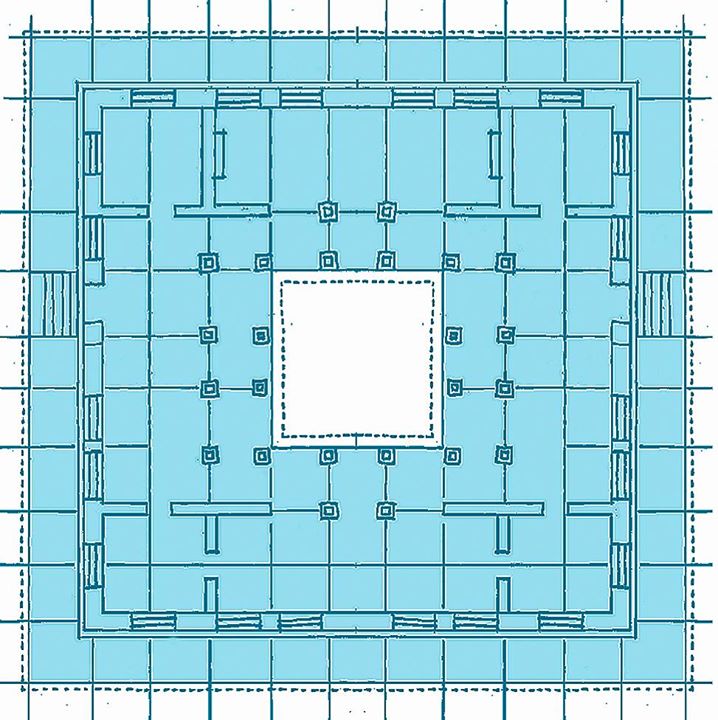
1. North east Direction ruled by Ishanya Shiva (Load of Water) influences balanced thinking
2. East Direction ruled by Indra (Load of Solar) – influences long life
3. South east Direction ruled by Agneya or Agni (Load of Fire) (Energy Generating) influences comfort, peace, prosperity and progeny.
4. South Direction ruled by Yama (Lord of Death or Lord of Death / Damage) yields nothing but mourning, depression and pain. If this direction used properly safeguards from envy of others and cast of all evils.
5.West Direction ruled by Varuna (Load of Water / Lord of Rain) (Neptune) influences reputation, fame, prosperity and success.
6. South west Direction ruled by Nairitya – Deity Lord (Demon) Nairitya influences Protection, strength and stability
7. North west Direction ruled by Vayu or Vayavya (Load of Wind) influences peace
8. North (Kuber) – Deity Lord Kuber or Lord of Wealth (Finance) and keeper of riches influences good strength, better business sufficient in flow of money, education, industrial growth etc.
9. Center ruled by Lord Brahma (Creator of Universe)
The ‘Aham Brahmasmi’ (“I am Brahman. I am part of the Universe.”) is the great sayings (Mahavakya) mentioned in Brihadaranyaka Upanishad 1.4.10. of Yajur Veda. The meaning is that ‘Whatever is in the Universe, is present in me’ (and ‘whatever is in me, is part of the Universe’). Indian temples represents the macrocosm of the universe and the structure of the human body represents the microcosm. Veda also says “Yatha Pinde tatha Brahmande”. It means what is going on within human being is the same as what is going on in universe. According to the Tamil Saint Tirumular “our body is a temple”. Here I would like to quote Stella Kramrisch:
“The vastu-purusha-mandala represents the manifest form of the Cosmic Being; upon which the temple is built and in whom the temple rests. The temple is situated in Him, comes from Him, and is a manifestation of Him. The vastu-purusha-mandala is both the body of the Cosmic Being and a bodily device by which those who have the requisite knowledge attain the best results in temple building.” (Stella Kramrisch,; The Hindu Temple, Vol. I)
The concept of chakra features in tantric and yogic traditions of Hinduism. In Yoga, Kundalini Shakti means the ‘coiled power.’ It is compared to a serpent that lies coiled while resting or sleeping.
Chakras are vital energy points (Kundalini energy) in the human anatomy, i.e. breath channels, or nadis, and the winds (vayus), that are centres of life force (prana), or vital energy. They include: 1. Muladhara, 2. Swadhisthana, 3. Manipura or manipuraka, 4. Anahata, Anahata-puri, or padma-sundara, 5. Vishuddha or Vishuddhi, 6. Ajna and 7. Sahasrara.
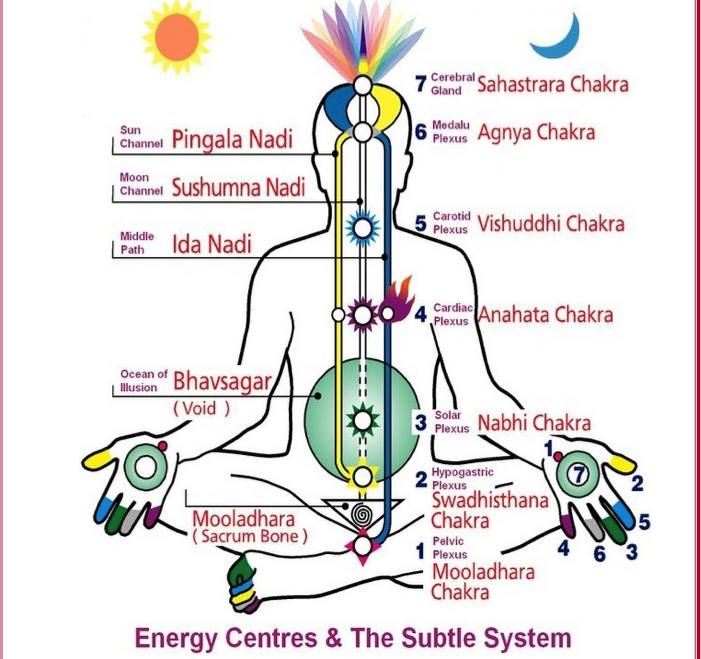
2. Swadhisthana or Adhishthana at the lower stomach region or the sacrum of the human. Vastu direction West (Varuna) – Lord Varuna (Neptune) Lord of Water or Rain. Formation of temple tank or water bodies in South or West will influence reputation, fame, prosperity and success.
3. Manipura or Manipuraka at the digestive glands (governs digestion through pancreas and adrenal glands) of the human. Digestion involves energy of fire. Female bears navel, womb and umbilical chord. According to Vastu Mandala Lord Brahma or Lord of Creation seated on lotus flower base (Adishtana) rules this point. Cosmic Brahma bridges the cosmic human navel or life. If this point in temple should be left open, the vital energy flows and the wholeness resides with blessings and protection.
4. Anahata, Anahata-puri, or Padma-sundara located at chest (governs lungs, immune system – thymus of human being). As per Vastu Mandala Lord Vayu or Lord of Wind rules this point. This grid relates to air and regulation of air. If this grid is allowed to flow air and the peace and comfort resides.
5. Vishuddha or Vishuddhi located at the throat i.e., thyroid glands (governs sound, speech communication and sence of security of human being). Mantras chanted by cosmic humanbeing bridges with cosmic Ishanya. Comic Ishanya is represented in OM, a Pranava Mantra form. According to Vastu Mandala Lord Shiva in Ishanya form rules this grid and represents the space or Akasha. Mantras chanted here will reverberate in space. If left free from obstacles and less occupation or weight, there will be balanced power.
6. Ajna or third eye located at pineal glands or between the eye brows; the two side nadis ‘Ida’ (yoga) and ‘Pingala’ are terminating and merge with the central channel ‘Sushumna’ (governs higher and lower selves and trusting inner guidance of human being). As per Vastu Mandala this direction is also related to open spaces (‘Akasha’) and to the North East corner (Ishanya). The sanctum (Garbagriha or womb chamber) is recommended at this grid, the seat of the divinity.
7. Sahasrara or pure consciousness chakra located at the crown of the head – symbolized by a lotus with one thousand multi-coloured petals. According to Vastu Mandala Anja is the sanctum. The vimanam and shikara forms the space element and the currents of life ascends through the ‘Brahma-randra shila’ or stone slab placed at ‘griva’ (neck)of the vimana. The finial of the shikara of the vimanam is the grid at which unseen sahasrara located.
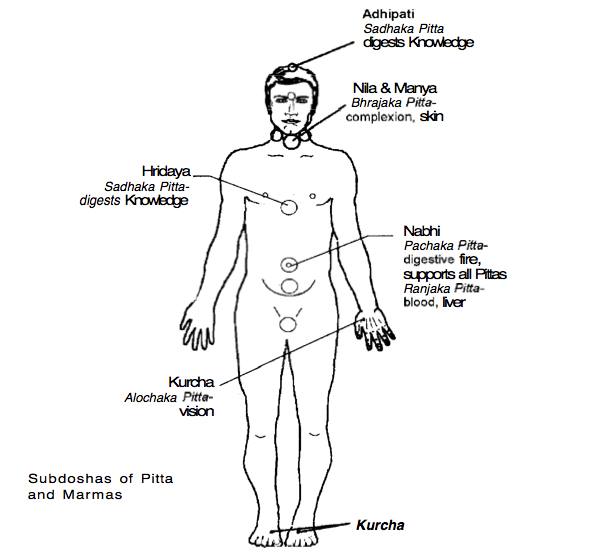
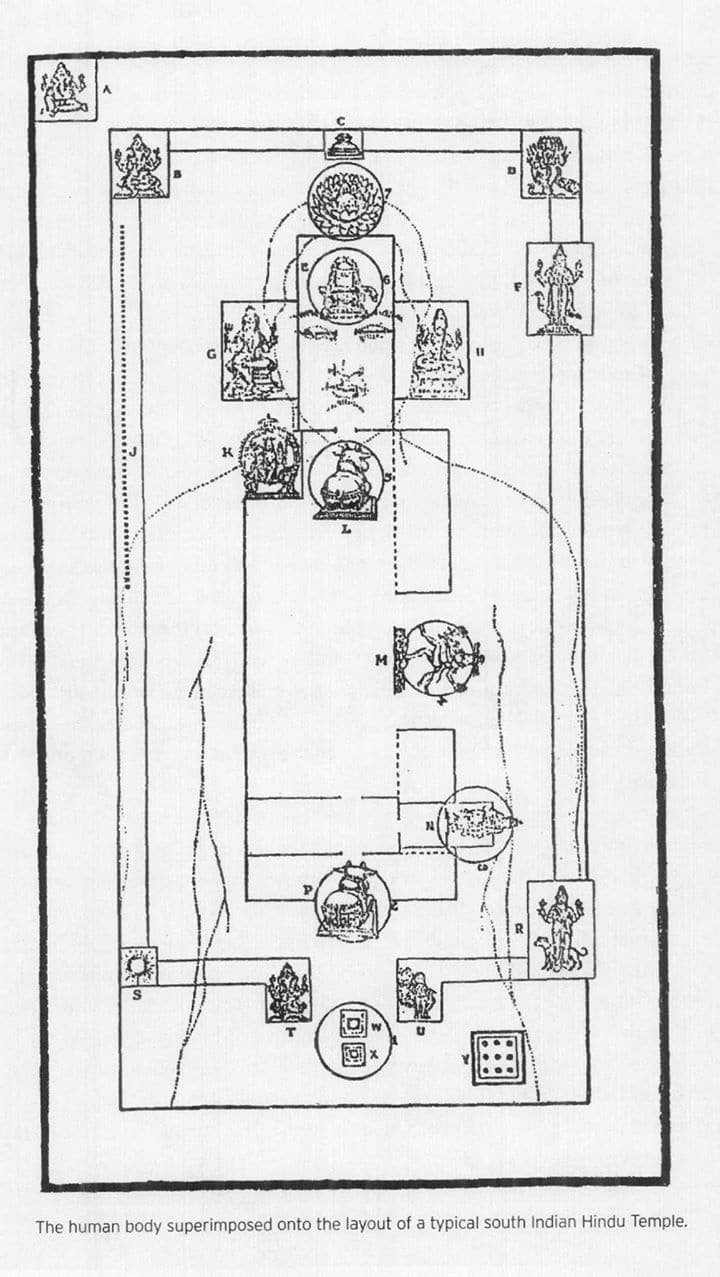
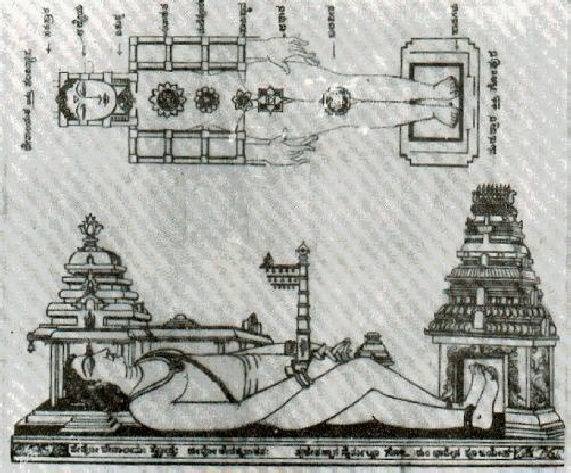
The picture shown here is reproduced from Hindu Temple vol 1. by Stella Kramrisch demonstate that how the temple structure can be compared with the human body. It is apt to quote the Sanskrit sloga from “Viswakarmyam Vastu Shastra”:
A Temple is a huge symbolism; it involves a multiple sets of ideas and imagery.
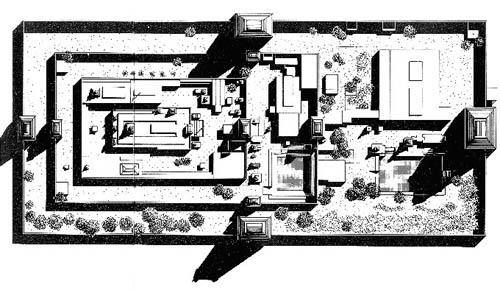
The temple is seen as a link between man and god; and between the actual and the ideal. As such it has got to be symbolic. A temple usually called Devalaya, the abode of God, is also referred to as Prasada meaning a palace with very pleasing aspects. Vimana is another term that denotes temple in general and the Sanctum and its dome, in particular. Thirtha, a place of pilgrimage is it’s another name.
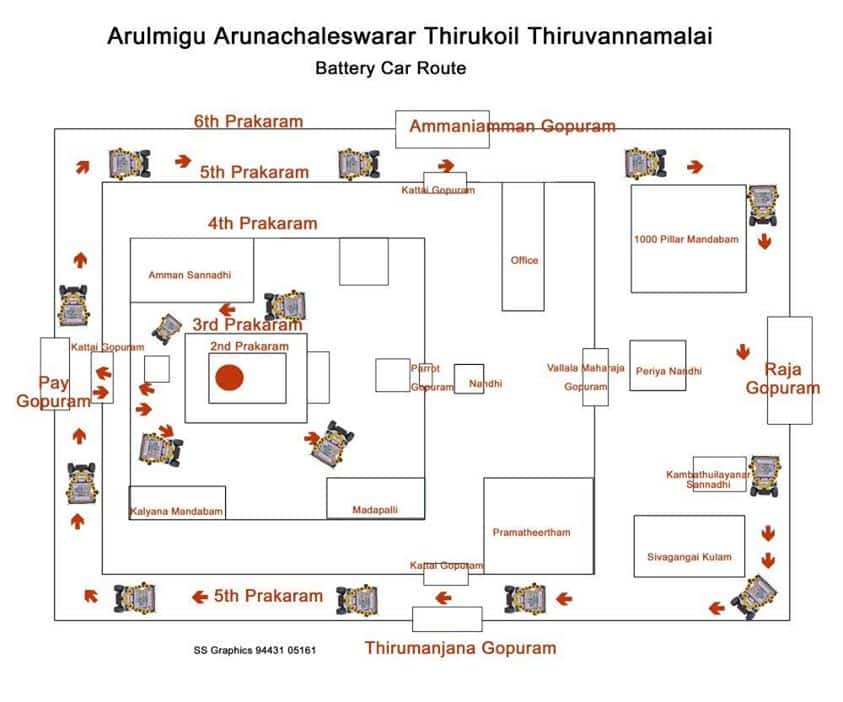
The symbolisms of the temple are conceived in several layers. One; the temple complex, at large, is compared to the human body in which the god resides. And, the other is the symbolisms associated with Vimana the temple per se, which also is looked upon as the body of the deity. And the other is its comparison to Sri Chakra.
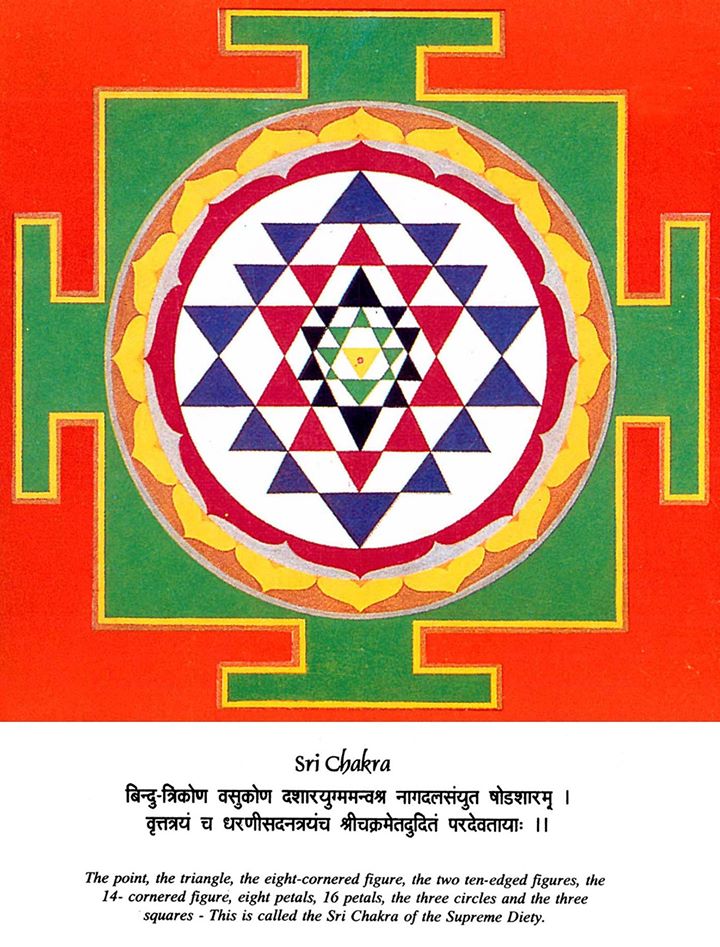
At the centre of the temple is the image of divinity and its purity that generations after generations have revered and venerated. That image residing at the heart of the temple is its life; and is its reason. One can think of an icon without a temple; but it is impossible to think of a temple without an icon of the divinity. The very purpose of a temple is its icon. And, therefore is the most important structure of the temple is the Garbagriha where the icon resides.
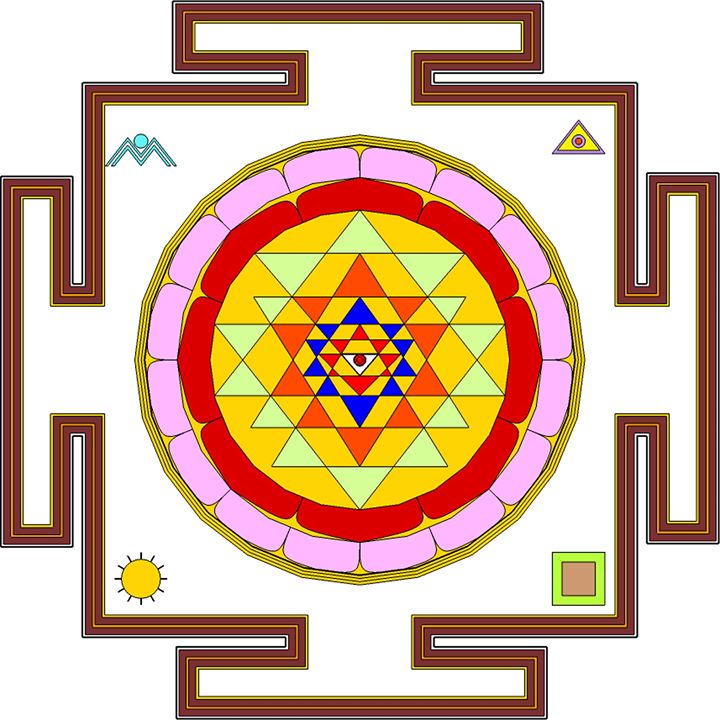
The temple as also the Sri Chakra employs the imagery of an all – enveloping space and time continuum issuing out of the womb. In the case of Sri Chakra the Bindu is the dimension-less and therefore imperceptible source of energy. The idol, the Vigraha, in the Garbagriha represents the manifestation of that imperceptible energy or principle; and it radiates that energy.
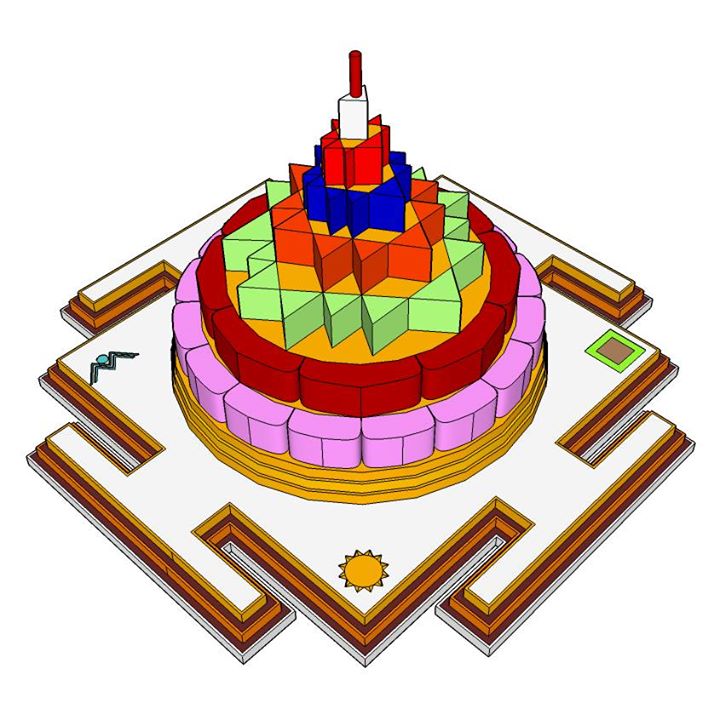
The devotee- both at the temple and in Sri Chakra- moves from the gross to the subtle. In the temple, the devotee proceeds from the outer structures towards the deity in the inner sanctum, which compares to the Bindu in the Chakra. The Sri Chakra upasaka too proceeds from the outer Avarana (enclosure) pass through circuitous routes and successive stages to reach the Bindu at the centre of the Chakr, representing the sole creative principle. Similarly the devotee who enters the temple through the gateway below the Gopura (feet of the Lord) passes through several gates, courtyards and prakaras, and submits himself to the Lord residing in the serenity of garbhagrha, the very hearts of the temple, the very representation of One cosmic Principle.
